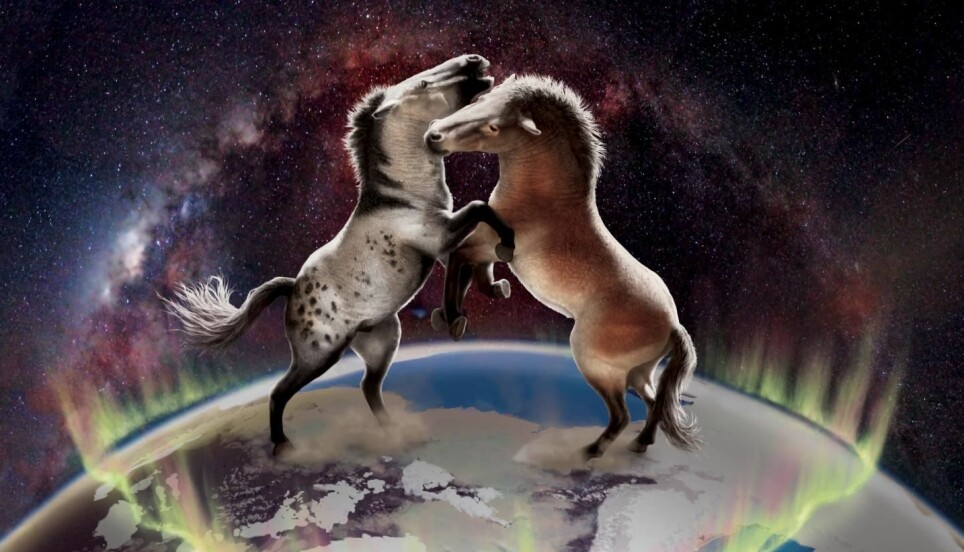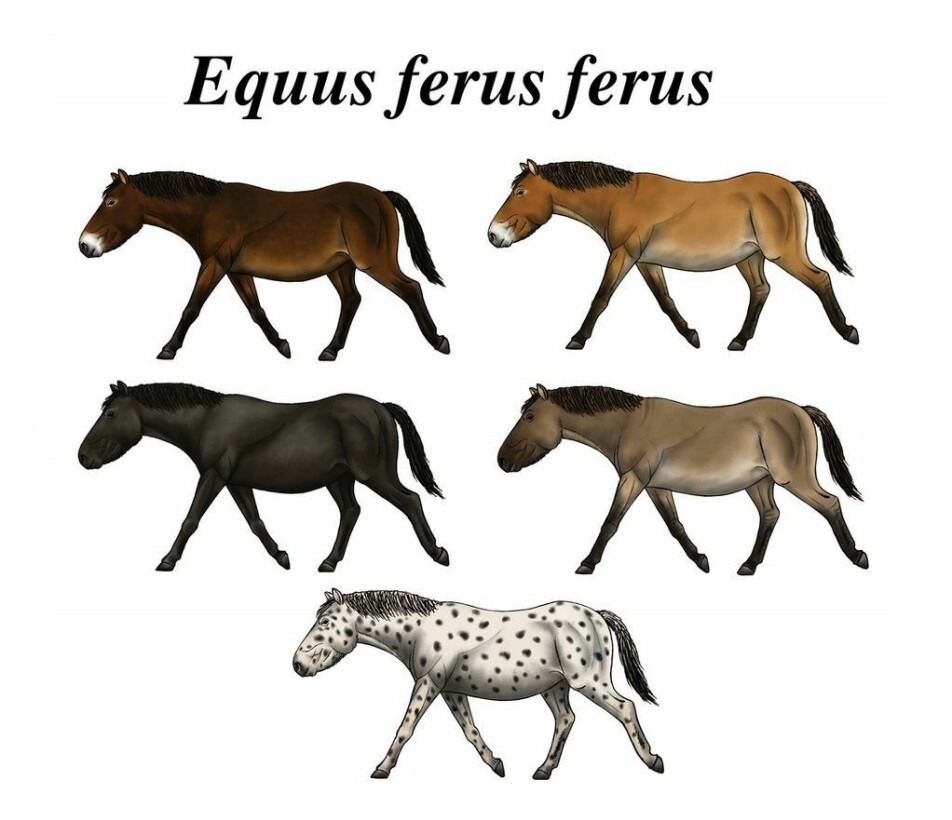
If horses hadn’t made it out of North America, they probably wouldn’t exist today
Ancient horses similar to the ones we know today evolved in North America. From there they spread to Asia and Europe.
The first ancient horses lived in forests 55 million years ago, both in Europe and America. At that time they were the size of dogs.
Horses resembling the ones we know today evolved in North America. From there they spread to Asia and Europe.
This migration happened between one million and 800 000 years ago, according to a new genetic study published in the journal Molecular Ecology.
If the ancient horses hadn’t made their way to Eurasia, there probably wouldn’t be any horses today.
About 10 000 years ago, horses disappeared from North America. Until then, there had been varieties of the Equidae family on the continent for over 50 million years.
In a new study, researchers investigated whether horses in North America and Europe had contact after the first dispersal.
“This is an important question. Several horse species have been named based on fossils from the last one million years. We wanted to ask if this was true. Were the horses on the different continents really different species?” says Peter Heintzman.
Heintzman is an associate professor at UiT Norway's Arctic University and has participated in the new study.
Travelled across a land bridge
The researchers analysed ancient genetic material. It turns out that horses from Eurasia and North America actually intermingled following the first dispersal.

This connectivity was possible when the ocean level was low, creating a land bridge where the Bering Strait is today. The land bridge connected Siberia and Alaska.
“We found out that the populations of horses travelled across the land bridge when it existed. But not only that, they intermingled as well. They weren’t totally isolated from each other,” says Heintzman.
“This finding indicates that North American and Eurasian horses were basically the same species.”
The land bridge occurred during ice ages and cold periods during the last one million years, when glaciers held on to a lot of water.
Exactly when it was possible to get over the bridge is still being debated.
“Over the last 100 000 years, we have a pretty good idea of when the land bridge existed. But the period from 100 000 years to a million years ago is still much more open to discussion. Genetic approaches could in fact help hypothesize when it was accessible,” Heintzman says.
Plays into debate about mustangs
Domestic horses come from wild horses in Europe and Asia. They were domesticated about 6 000 years ago.
The wild horses are gone, with the possible exception of Przewalski’s horse, which originated on the Central Asian steppes. However, numerous wild horses in North America today came with the Spaniards in the 16th century.
There is a debate in America about whether the wild mustangs should be seen as a species that doesn’t really belong there, or as a species that has been reintroduced to its natural environment, Heintzman says.
“This study helps to show that North American horses mixed with those from Eurasia almost until they were exterminated in North America.
“The study suggests that, at least from a biological perspective, it’s easier to explain it as a reintroduction, rather than regarding horses as an invasive species. But of course this is a very politically charged field.”

The American Wild Horse Campaign, which works to protect America's wild horses, has supported the study.
Recently, another study was published in which researchers showed that wild horses and donkeys dig water holes in dry areas. The researchers believe this could potentially improve water access for other animals as well.
Others believe that the wild horses are a threat to the ecosystem, and that they do not have a natural place there. The Wildlife Society writes that North America has become drier in the last 10 000 years and that many of the horses' natural enemies have disappeared.
The horses are increasing in number and discussions are ongoing about how the population should be controlled.
Looked at the DNA from wild horses
The new study shows that there were at least two periods in the last one million years where horses migrated between the continents after the first dispersal.
The researchers looked at two types of genetic material, mitochondrial DNA and nuclear DNA found in cell nuclei.
Mitochondrial DNA is passed on from mother to offspring and is considered to have a steady mutation rate, making it possible to follow the maternal lineage.
Mitochondrial genomes are very helpful to look at for when and how often horses moved from one place to another. But they aren’t as good at revealing how much they intermingled, so for that researchers looked at nuclear DNA, says Heintzman.
It is challenging to obtain good reconstructions of ancient DNA, so the researchers didn’t have much to look at. They used eight sequenced genomes and 187 mitochondrial genomes.
“We can’t say exactly how much and when the horses interbred, but we can say that it happened to some degree.”
What did the original horses look like?
Heintzman says that a million years ago, the horses in America were big.
“They were the size of a large draught horse, like a Shire horse.
The Shire is the world's largest horse breed.
“So between 25 000 and 15 000 years ago, the horses shrank in size, becoming more like Icelandic horses today,” says Heintzman.
At the same time, there was actually another genus of horses in North America, the Haringtonhippus. This genus also died out at the end of the last ice age. Read more about these horses at thesciencebreaker.org.

Przewalski’s horse has been considered the last surviving wild horse. Did it look like the original wild horses?
Przewalski’s horse has only one colour variant and is quite short and stocky.
Przewalski’s horses have been considered wild ancestors of domesticated horses. It has been thought that their ancestors were a yet more primitive form and probably representative of wild horses, says Heintzman.
“What’s interesting is that when you look at cave paintings from the last ice age, you see that they were horses with much more varied coat colours. Not all of them looked like the Przewalski’s horse we know today.

In 2011, researchers found genetic evidence that paintings of spotted horses were not just fantasy. The spotted pattern was a colour variant that the horses from the ice age could have had, LiveScience wrote.
Furthermore, a genetic study from 2018, published in the journal Science, indicates that Przewalski’s horse is not completely wild after all. It descended from early domesticated horses from the Botai culture and has since become wild.
Were there wild horses in Norway?
It may well be that there were once wild horses in Norway as well, says Heintzman. But the proof is difficult to find.
“The problem is that Scandinavia was almost completely covered by glaciers during the last ice age. Any and all older evidence of wild horses and other animals was destroyed.”
“But it’s clearly possible,” says Heintzman. “If we think back to 120 000 years ago, the climate was actually a little warmer than today. Scandinavia was free of ice, and there would almost certainly have been megafauna around here.”
Translated by Ingrid Nuse.































